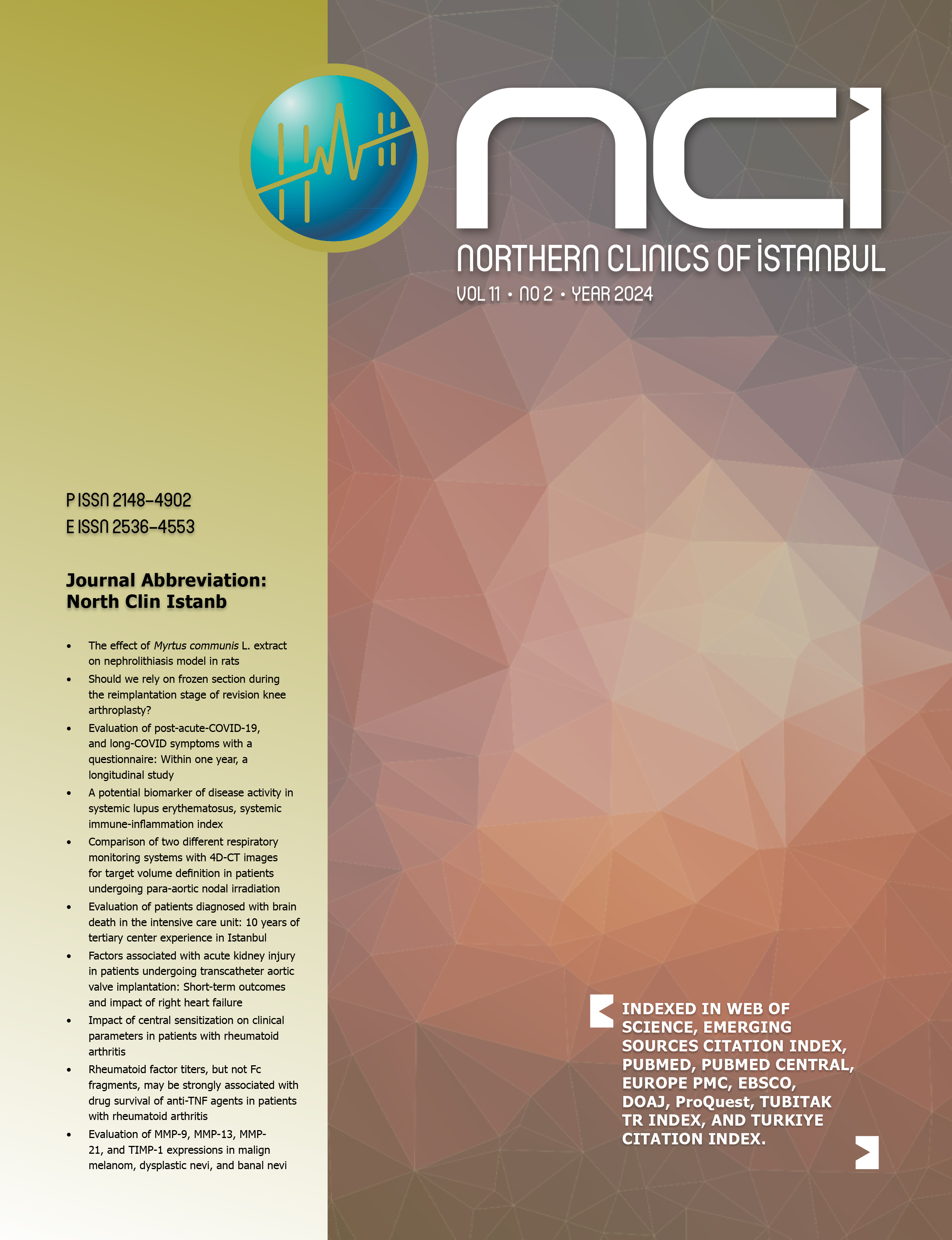How successful is pleural sound sign in the identification of pneumothorax?
Saniye Göknil Çalık1, Mustafa Çalık2, Sadık A. Girişgin3, Osman Karaoğlan4, Zerrin Defne Dündar3, Mehmet Ergin31Department of Emergency and First Aid, KTO Karatay University Institute of Medical Sciences, Konya, Turkey2Department of Thoracic Surgery, Health Sciences University, Konya Training and Research Hospital, Konya, Turkey
3Department of Emergency Medicine, Necmettin Erbakan University Meram Faculty of Medicine, Konya, Turkey
4Department of Emergency Medicine, Konya Numune State Hospital, Konya, Turkey
INTRODUCTION: In the present study, in thorax ultrasonography (USG) Doppler images obtained from cases with occult pneumothorax, we investigated the status of pulsatile pleural sounds over the pleural line and called these as the pleural sound sign (PSS). The purpose of the present study was to identify the efficacy of the proposed PSS in diagnosing pneumothorax and to compare it with the other USG findings including the sliding lung sign (SLS) and seashore sign (SSS).
METHODS: The present study included 66 consecutive patients who were referred to the emergency unit with a blunt trauma from October 2009 to January 2010 at a tertiary university hospital.
RESULTS: Of the 66 patients, 34 were in the patient group, and 32 were in the control group. Males accounted for 66.7% (n=44) of the study population. In predicting pneumothorax, the areas under receiver operating characteristic (ROC) curves of PSSmax and PSSdifference were 0.989 and 0.990, respectively. While the sensitivity of the SLS was 88% and the sensitivity of the SSS was 56%, the specificities of the SLS and SSS were 100%. Based on our findings, accuracy ranking was as follows: PSSmax = PSSdifference > SLS > SSS.
DISCUSSION AND CONCLUSION: New applications of thorax USG are rapidly growing. Our findings have to be confirmed in a large patient series. PSS is not a novel method, but it enhanced the importance of USG in the diagnosis of pneumothorax. We can stipulate that it can replace thorax computed tomography imaging particularly for the diagnosis of occult pneumothoraxes.
Keywords: Emergency medicine, chest, pleural sound sign; pneumothorax; ultrasonography.
Manuscript Language: English





















